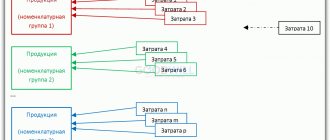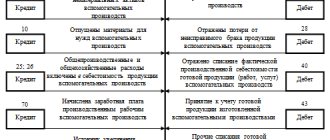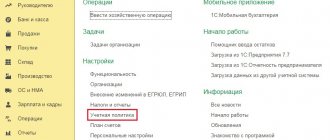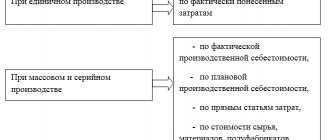Concept and purpose
The production structure of any industrial enterprise is based on the interconnection of its divisions. This includes affiliates and subsidiaries, representative offices and branches, as well as individual product manufacturing lines. Among them are large industrial units (factories), as well as its constituent parts - departments (shops), sections, teams. The production structure may include a service facility. Its divisions do not participate in the creation of products for sale, but provide for the needs of main and auxiliary production.
The main task of the service economy is to ensure the continuous and optimal functioning of auxiliary and main production, by meeting various industrial needs. If necessary, its workshops can take on part of the orders. This sometimes happens when equipment breaks down or when there is a need to make increased deliveries of products.
Service farms
In addition to their core activities, large enterprises often maintain infrastructure facilities that are not directly related to the production of their main products. We are talking about canteens for workers, rest homes, dispensaries, kindergartens, etc. The records may also include dormitories or even apartment buildings for employees.
The result of the activities of service organizations may be intended for:
- ensuring main and auxiliary production;
- ensuring the socio-cultural needs of workers (kindergartens and nurseries, boarding houses, rest homes);
- production and sale of products for the purpose of making a profit.
There are the following types of sources of financing for service farms:
- self-sufficiency;
- partial or full financing by the parent organization;
- membership fees or shares;
- state full or partial financing in the form of grants, subsidies, budgetary allocations;
- charitable contributions.
Composition of service production
This industrial division plays an important role in the production processes of products in the main activity of the enterprise. Service production is able to provide semi-finished products, materials and various services to all other departments. Typically this unit consists of:
- Transport workshop - provides services for the transportation of goods, equipment, materials and other material assets necessary for production. It is important that transportation is carried out only within the enterprise. According to its structure, it can be divided into sections (operational, dispatch, repair, etc.).
- Sales and supply services - provides the necessary materials and equipment, carries out work on the disposal of materials and other valuables that are not suitable for use. Carries out the sale of unclaimed inventories.
- Warehousing - stores and collects materials and equipment that may later be useful to the main or auxiliary production.
- Household premises and catering departments.
In addition, many large industrial enterprises have their own social and cultural complex, consisting of children's institutions (camps, kindergartens), cultural centers or recreation centers, and dormitories for employees. The costs of maintaining such premises, including utilities, are also reflected as part of the costs of service production.
What belongs to the group of service industries and farms
Tax Code in Art. 275.1 defines service industries and provides a classification of units included in such a group of farms. This type of production activity refers to technologies and operations that are not directly related to the main direction of the company's work. All actions within these productions are aimed at creating optimal conditions for the implementation of individual tasks by key industrial workshops.
The number of service farms includes:
- housing and communal services facilities, represented by hotel complexes and dormitory buildings;
- social or cultural facilities (hospital, medical unit, medical center, baths, sports grounds, children's camps);
- subsidiary farm;
- functioning training and course-type plants.
NOTE! Service farms cannot be a key segment of the enterprise; they are designed to complement the main production capacities. Objects included in the category of service industries can be transferred to third parties by concluding a lease agreement with them
It is permitted to use in such farms assets that do not belong to the organization by right of ownership. The products of service production activities can either be used by the manufacturer itself or be sold on an equal basis with the goods of the main assortment line
Objects included in the category of service industries can be transferred to third parties by concluding a lease agreement with them. It is permitted to use in such farms assets that do not belong to the organization by right of ownership. The products of service industries can either be used by the manufacturer itself or be sold on a par with the goods of the main product line.
REMEMBER! The main task that service production must perform is to ensure the continuity of the functioning of the institution’s main facilities, optimize the operation of all enterprise systems and meet the needs of industrial departments.
In cases of equipment breakdown in workshops, service production facilities can temporarily take over the fulfillment of part of the orders. The results of the work of service farms are the semi-finished products, workpieces, materials and services they produce. In practice, situations may arise when a rush demand is created for the products of service industries under the influence of external factors. In these situations, enterprises initiate a reorientation of production and make the production of this type of goods their main activity. When changing the course of development and type of activity, expenses for these objects will be taken into account as for the main production.
The typical structure of service industries contains the following divisions:
- Transport department involved in the transportation of goods and delivery of equipment throughout the enterprise. It can be divided into several independent units (repair group, dispatch vehicle, operational service).
- The supply and sales department is responsible for the provision of production workshops with material assets, for the disposal of materials recognized as unsuitable or dangerous for use, and the sale of unclaimed valuables.
- Warehouse complexes that are needed for the collection and storage of various types of materials, fixed assets for use in production in the future.
- Domestic buildings and premises.
- Public catering facilities.
- Social and cultural objects.
Account 29
A large amount of information about the activities of the service business requires the allocation of a separate account for collecting data and recording it in accounting. Section III of the Standard Chart of Accounts contains account 29, which serves for such purposes. It has an active structure, since it is reflected in the assets of the balance sheet. In the process of carrying out business transactions, entries occur, which in debit mean an increase in direct expenses for the activities of service production, and in credit - their write-off and distribution among items.
This account, like other Section III accounts, accumulates expenses over a period. At the end of the month, amounts are written off to the debit of other accounts. Thus, there is no balance at the end of the period. Account 29 has a distinctive feature - it takes into account only direct expenses that are associated with the direct functioning of service farms and departments.
Analytical accounting
Service production may consist of many divisions. The activities of each of them must be documented. For these purposes, subaccounts 29 are opened, which are intended to collect information in a specific area and for similar purposes. An enterprise can keep records regarding service facilities on the following analytical accounts:
- 29/1 “Housing and communal services” - to account for the costs of maintaining housing facilities (dormitories, utilities) on the balance sheet of the enterprise;
- 29/2 “Agricultural subsidiary farms” – collection of costs aimed at fattening poultry or livestock, growing crops;
- 29/3 “Household services” - to account for the costs of maintaining household organizations and its personnel (baths, hairdressers, laundries, etc.);
- 29/4 “Children’s preschool institutions” – collection of information on the costs of preschool institutions;
- 29/5 “Maintenance of sanatoriums and other health institutions”;
- 29/6 “Cultural institutions” - to account for the costs of maintaining cultural palaces owned by the enterprise and the costs of holding entertainment events;
- 29/7 “Catering divisions” – maintenance of canteens and buffets on the balance sheet of the enterprise.
Analytical accounting of production costs, implementation of work (provision of services) by service units should be organized separately for each type of activity.
How analytical accounting is carried out on account 29: nuances
The account in question is synthetic, and various analytical accounts (or sub-accounts) can be opened within it for the purpose of detailing (additional identification) of business transactions. Analytical accounting for account 29 is carried out in accordance with:
- with industry standards;
- corporate standards.
If we talk about industry standards, the Ministry of Agriculture of Russia recommends using the following subaccounts (Order of the Ministry of Agriculture of Russia dated June 13, 2001 No. 654):
- 29.1 (for accounting for utility costs);
- 29.2 (used by agricultural enterprises to account for expenses aimed at ensuring productivity associated with caring for animals);
- 29.3 (household expenses);
- 29.4 (expenses within the activities of kindergartens on the balance sheet of the organization);
- 29.5 (activities of medical and preventive institutions);
- 29.6 (activities of cultural institutions);
- 29.7 (activity of catering facilities).
At the same time, the enterprise has the right to open any subaccounts to account 29. They must be fixed in the working chart of accounts, which is approved in the accounting policy.
***
An organization, in addition to its main production and those complementing it, may have various service capacities. Those expenses that are incurred on them may be related to the work of the service department for itself, to activities in the interests of other divisions of the company, or aimed at meeting the needs of third parties.
Debit account 29
The reader already knows that account 29 is active. This means that any receipt of funds will be reflected in debit. In this case, revenue is considered to be the creation of new expenses for service production. Here we indicate the direct costs that arose in connection with the performance of work or the manufacture of products for our own needs. The amounts of materials used and other valuables are written off from the credit of their accounting accounts to debit 29. Expenses of auxiliary production, if they arise, are also written off by posting Dt 29 Kt 23.
It is worth knowing that general business expenses arising from the manufacture of products or the provision of services (performance of work) are not taken into account as part of the direct costs of service production if they were intended for their own needs (with the exception of construction and major repairs). If the result of the activity was transferred to a third party, then part of the general business expenses is written off as direct costs of service production: Dt 29 Kt 26.
Account 10 06 in accounting
All company assets that have a useful life of less than 12 months should be classified as inventories. For example, raw materials, materials, semi-finished products, components, packaging, fuel, inventory and other similar assets.
To systematize and summarize information about the cost and quantitative indicators of inventories, account 10 “Materials” is used. Such norms are enshrined in Order of the Ministry of Finance No. 94n. It is permissible to take into account values in two ways: at actual cost (clause 62 of Order No. 119n) or at accounting prices using 15 and 16 accounting accounts (clause 80 of Order No. 119n dated December 28, 2001).
Note that the company independently chooses the accounting method suitable for the specifics of its activity. This choice must be justified in the accounting policies of the institution. Also in the accounting policy, indicate the forms of primary and accounting documentation that will be used to reflect operations on the movement of money.
The method for writing off materials from the 10th account should also be written down in the accounting policy. Three methods are allowed:
- Based on the average cost of inventories.
- Based on actual unit cost.
- FIFO method.
Opening sub-accounts for account 10
Order of the Ministry of Finance No. 94n determines that in order to organize complete, reliable and detailed accounting of the company’s material assets, the opening of additional sub-accounts is provided. This approach allows you to group all inventory items of an organization by type:
NumberName
| 10.1 | Raw materials | Reflect material assets that are used to carry out the main activity |
| 10.2 | Semi-finished products | Components, components, structures and parts that are used in the main and auxiliary production cycles |
| 10.3 | Fuel | Fuel and lubricants, gasoline, diesel fuel, gas, motor oils, etc. |
| 10.4 | Tara | Materials used as containers and (or) packaging |
| 10.5 | Spare parts | Spare parts used for repair and maintenance |
| 10.6 | Other inventories | Values not included in other groups |
| 10.7 | Materials for external processing | MPZ intended for external processing |
| 10.8 | Construction materials | To reflect information about the availability and movement of building materials from developers |
| 10.9 | Household equipment | Materials and equipment, accessories and equipment used to perform general economic work |
Please note that opening all accounts is not necessary. The organization independently decides which subaccounts will be used in accounting. So, for example, account 10.10 - what applies to a particular institution must be defined in the accounting policy. Typically, special equipment (special equipment) is included in this subaccount.
Accounting features and typical postings
Account 10 belongs to the active group of accounts. Consequently, debit 10 of the accounting account (for dummies) reflects the receipt (increase) of material assets, and credit turnover reflects the disposal of assets from the corresponding accounting accounts. The ending balance can only be in debit. A credit balance indicates that there is an error in recording accounting transactions.
Inventory accounting needs to be detailed. To do this, provide for maintaining detailed analytical records in the context of items, batches, storage locations, materially responsible persons and departments.
The actual presence of MC must be periodically monitored. Accountants are required to conduct inventory checks to identify deviations from accounting indicators and actual availability. Set out the reconciliation procedure and frequency in the accounting policy.
Accounting entries for account 10:
OperationDebitCredit
| MH were shipped to the enterprise warehouse from suppliers | 10 | 6076 |
| Construction materials for repairs were purchased by an accountable person | 10.8 | 71 |
| Semi-finished products transferred to main production | 20 | 10.2 |
| Fuel written off as general business or production expenses | 2526 | 10.3 |
| The shortages of the Ministry of Health identified as a result of the inventory were written off | 94 | 10 |
| Reflects internal movement of materials between shopping centers, departments, storage locations | 10 | 10 |
When maintaining automated accounting, it is recommended to systematically generate interim reporting in order to control the movement of material assets.
One of such reports is the balance sheet for account 10.
The accounting document contains information on the availability of MH balances at the beginning and end of the reporting period, as well as on the movement (receipt and disposal) of materials during the reporting period.
Source: //gosuchetnik.ru/bukhgalteriya/kak-rabotat-so-schetom-10-plana-schetov
Account 10 in accounting: what it is used for, characteristics, subaccounts, postings
When conducting its business, a business entity uses material resources that immediately transfer the cost to the finished product, service, or work. Typically, they are used in the same production process. To record and summarize information about the movement of these objects, according to the current chart of accounts, special account 10 is used in accounting.
What is account 10 used for in accounting “materials”
The chart of accounts establishes that account 10 takes into account objects that are defined in accounting in accordance with PBU 5 as materials.
Materials include material assets that are used in the form of inventory, raw materials for the production of finished products, provision of services, performance of work, for resale if necessary, for the implementation of the management process of a business entity.
If material assets are acquired for the purpose of resale on an ongoing basis, then they are goods and a different account is used to account for them.
Materials are accounted for on account 10 at the actual costs incurred for their acquisition or at accounting prices, depending on the methods chosen in the organization’s accounting policy.
Accounting can be maintained for each unit of materials, batch, or group. The company independently determines how to record them based on the characteristics of its activities, as well as in order to ensure control over their availability and movement.
bukhproffi
Attention! Materials located in the company may not belong to it by right of ownership, then they are recorded on off-balance sheet accounts (002 and 003).
Account credit 29
The costs of producing products or performing work in service production must be taken into account in the financial result of the enterprise. They are written off on the credit of account 29. In addition, this part also takes into account the amounts of the actual cost of products manufactured or services provided.
Account 29 “Service production and facilities” interacts with the accounts of inventory items or department costs. If the results of activities are aimed at selling to a third party, then the amounts are written off to the debit of account 90.
GLAVBUKH-INFO
Account 29 “Servicing industries and farms” is intended to summarize information on the costs associated with the production of products, performance of work and provision of services by the service industries and farms of the organization.This account may reflect the costs of service industries and farms on the balance sheet of the organization, whose activities are not related to the production of products, performance of work and provision of services that were the purpose of creating this organization: housing and communal services (operation of residential buildings, dormitories, laundries, bathhouses and so on.); sewing and other consumer service workshops; canteens and buffets; preschool institutions (kindergartens, nurseries); rest homes, sanatoriums and other health, cultural and educational institutions; research and development units.
The debit of account 29 “Service production and facilities” reflects direct expenses related directly to the production of products, performance of work and provision of services, as well as expenses of auxiliary production. Direct expenses are written off to account 29 “Servicing productions and farms” from the credit of accounts for inventory accounting, settlements with employees for wages, etc. Expenses of auxiliary production are written off to account 29 “Service production and farms” from the credit of account 23 “Auxiliary production”.
The credit of account 29 “Service production and facilities” reflects the amounts of the actual cost of products completed by production, work performed and services rendered. These amounts are written off from account 29 “Service production and farms” to the debit of the accounts:
accounting for material assets and finished products produced by service industries and farms;
accounting for the costs of consumer units of work and services performed by service industries and farms;
90 “Sales” (when selling to third-party organizations and individuals works and services performed by service industries and farms), etc.
The balance of account 29 “Service production and farms” at the end of the month shows the value of work in progress.
Analytical accounting for account 29 “Service production and farms” is carried out for each service production and farm and for individual cost items of these productions and farms.
Operation
| Source documents | Debit | Credit | |
| Materials received for service production | registration card M-17 | 29 | 10 |
| Salary accrued: | |||
| - workers of service industries | payslip | 29 | 70 |
| — social contributions based on wages are calculated | calculation | 29 | 69 |
| Ancillary production services | Act | 29 | 23 |
| Products from service industries have arrived at the warehouse | invoice | 43 | 29 |
| The services of service industries were used in the main production | Act | 20 | 29 |
| The cost of services provided by service industries when sold externally has been written off. | Act | 90-2 | 29 |
Account 29 “Servicing industries and farms” corresponds with the accounts:
| by debit | on loan |
| 02 Depreciation of fixed assets | 10 Materials |
| 04 Intangible assets | 11 Animals for growing and fattening |
| 05 Amortization of intangible assets | 25 General production expenses |
| 10 Materials | 26 General expenses |
| 11 Animals for growing and fattening | 29 Service industries and farms |
| 16 Deviation in the cost of material assets | 40 Release of products (works, services) |
| 19 Value added tax on acquired assets | 43 Finished products |
| 23 Auxiliary productions | 44 Selling expenses |
| 25 General production expenses | 45 Items shipped |
| 26 General expenses | 73 Settlements with personnel for other operations |
| 28 Defects in production | 76 Settlements with various debtors and creditors |
| 29 Service industries and farms | 79 On-farm settlements |
| 60 Settlements with suppliers and contractors | 80 Authorized capital |
| 68 Calculations for taxes and fees | 90 Sales |
| 69 Calculations for social insurance and security | 91 Other income and expenses |
| 70 Settlements with personnel for wages | 94 Shortages and losses from damage to valuables |
| 71 Settlements with accountable persons | 96 Reserves for future expenses |
| 76 Settlements with various debtors and creditors | 99 Profit and loss |
| 79 On-farm settlements | |
| 80 Authorized capital | |
| 91 Other income and expenses | |
| 94 Shortages and losses from damage to valuables | |
| 96 Reserves for future expenses | |
| 97 Deferred expenses |
Source: Correspondence of accounts E. Kholodenko, A. Rostovtsev
| < Previous | Next > |
Typical transactions on account 29
Having understood the principle of interaction of account 29 with other accounting accounts in the process of carrying out business transactions, you can begin to consider typical transactions.
Account assignments for account 29
| Dt | CT | Characteristics of a business transaction |
| 29 | 71 | Expenses of servicing production are written off to an accountable person |
| 29 | 28 | The cost of production includes losses from defects produced by the service facility |
| 45 | 29 | Products manufactured by service production were shipped to a third party |
| 90.2 | 29 | The cost of sales of products manufactured by service production was written off |
| 80 | 29 | The work in progress of the service business was transferred in full to the member of the partnership |
| 97 | 29 | Maintenance production costs are included in deferred expenses |
| 29 | 11 | The cost of young animals used for the needs of the service farm has been written off |
Reflection of the amount of costs
25 debit account summarizes all written-off ODA, turnover accumulates during the month, and as a result shows the total monetary value of expenses. In this case, accounting records of the following plan are compiled:
- Dt 25 Kt 02, 05. Depreciation charges for intangible assets and fixed assets have been accrued.
- Dt 25 Kt 10, 16. Materials used for general production (OPR) needs are written off.
- Dt 25 Kt 69, 70. The salaries of the OPD employees have been accrued, and deductions have been made to the funds.
- Dt 25 Kt 60, 76. Services provided by third parties are written off as ODA costs.
An example of making entries for account 29
Let's consider a situation in which an enterprise runs a children's health camp. Gradually, cost items will be formed that will need to be reflected in accounting data. For example: as a result of the first shift of children’s holidays, the following expenses arose:
- depreciation of fixed assets in the amount of 3200 rubles;
- use of utilities – 21,000 rub. (VAT RUB 3,784);
- staff salary – 100,000 rubles;
- mandatory contributions – 22,000 rub.
Account 29 will be replenished with the following entries:
- Dt 29 Kt 02 for 3200 rub. – reflects the amount of depreciation of the camp property;
- Dt 29 Kt 60 for 17,216 rub. – utility costs are taken into account (excluding VAT);
- Dt 19 Kt 60 for 3784 rub. – accepted for accounting for VAT on utility bills;
- Dt 29 Kt 70 per 100,000 rub. – wages for camp staff were accrued;
- Dt 29 Kt 69 for 22,000 rub. – the amount of contributions to extra-budgetary funds was posted.
Accounting for production costs (in this case, for the provision of educational and health services) was reflected in the debit of account 29. The final result will be written off to account 91.
How to apply and how to close the account: postings
So, the service department can:
- Operate for yourself, incurring direct expenses. These may include:
- depreciation (its accrual is shown by posting Dt 29 Kt 02);
- salaries to employees, contributions (Dt 29 Kt 70, Dt 29 Kt 69);
- payment for third-party services, such as utilities (Dt 29 Kt 60).
- Operate to meet the needs of other departments.
As part of this function, the service department can:
Don't know your rights? Subscribe to the People's Adviser newsletter. Free, minute to read, once a week.
- purchase goods and materials for the manufacture of products at their facilities (Dt 29 Kt 10);
- pay wages to workers employed at such facilities (Dt 29 Kt 70, DtT 29 Kt 69);
- carry out depreciation of such capacities (Dt 29 Kt 02).
All expenses debited to account 29 are written off to the costs of the production that is supported:
- Dt 20 Kt 29 (if main production is supported);
- Dt 23 Kt 29 (if auxiliary production is supported).
- Operate by performing work to order from third-party companies.
In this case, the service department can:
- as in the case of activities for other departments, purchase materials, pay wages to employees (the postings are similar), and then write off the costs incurred as general expenses (Dt 90.2 Kt 29);
- receive income from the provision of external services (after concluding the contract, revenue is reflected: Dt 62 Kt 90.1, later funds are credited to the current account: Dt 51 Kt 62).
If a profit is made on account 90, it is recorded by posting Dt 90.9 Kt 99.
Maintenance of our own production facilities
What will the postings look like if the service production carries out work in order to provide the main or auxiliary production with the necessary materials or other means? Reflecting transactions of this type is quite simple. To begin with, you should debit account 29 the costs associated with the process of manufacturing products in the service production (cost of materials, wages, electricity consumed, etc.). After completion of the process, all accumulated costs in connection with the completion of this task are written off as a debit to the main or auxiliary production account.
29 accounting account serves to reflect information about the activities of service production or farming, which sometimes forms a large complex of divisions of various directions. After accumulation in the debit of the account, expenses are subject to write-off depending on the nature of their occurrence. The account is closed, and everything starts all over again in the new month.










